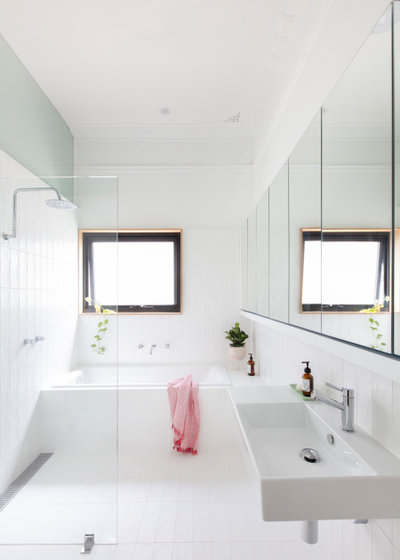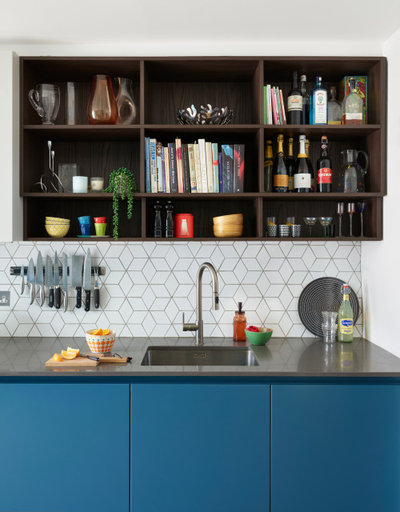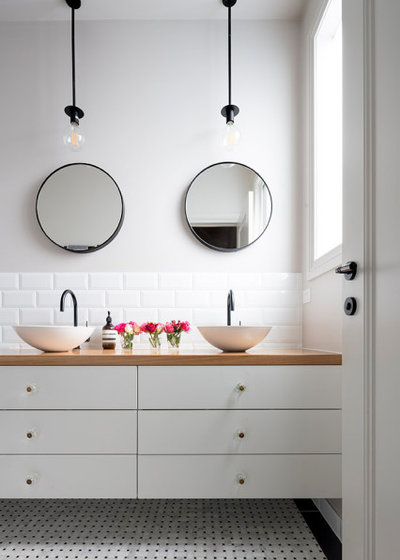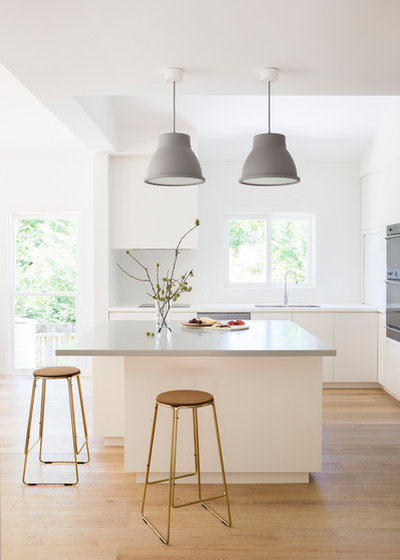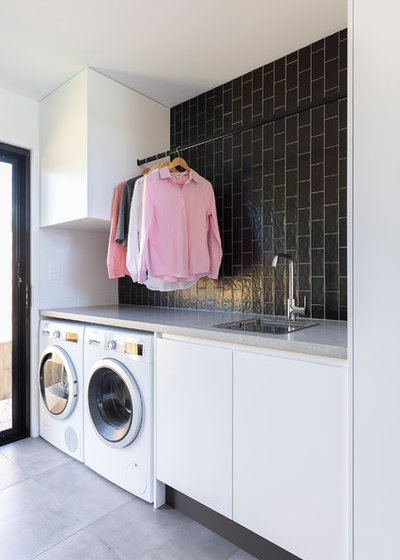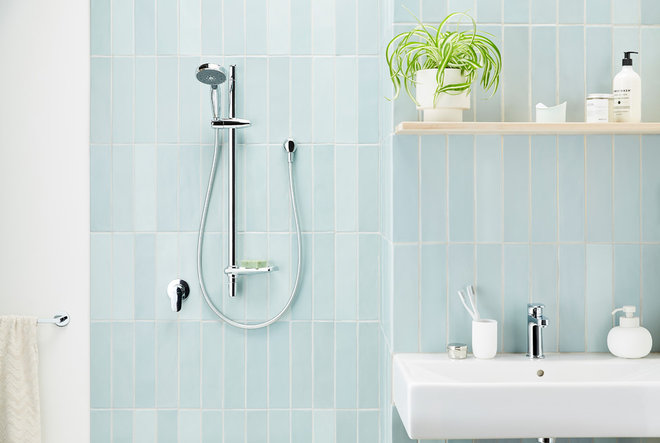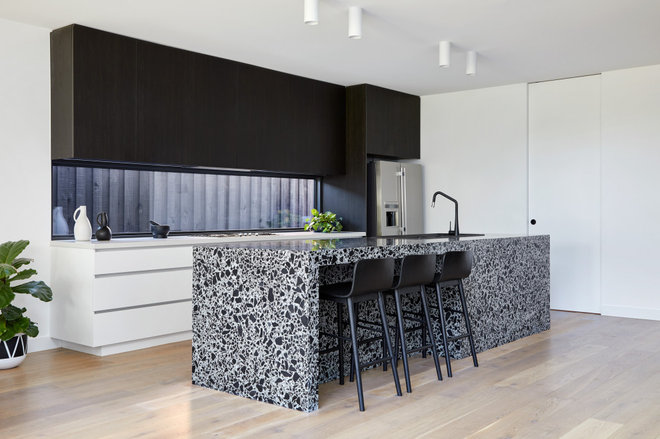LJ Gilland Real Estate is a prestigious boutique agency specializing in Property Investment Management Services and the Sales of Investment Properties with tenants in place. Comprised of a top performing group of handpicked specialists, our Agents proudly serve Property Investors in Queensland.
Wednesday, October 30, 2019
Monday, October 28, 2019
According to a Moody;s Report Brisbane houses are expected to see a modest year-on-year decline of 1.8 per cent in 2019, followed by an increase of 2 per cent in 2020 and a further 3.7 per cent in 2021.
National house prices are set for sustained growth after two years of steady decline, thanks to the RBA’s work to revive the economy, according to Moody’s.
Moody’s Investor Services has said that the Reserve Bank of Australia (RBA) has been “forced to do the heavy lifting” in order to strengthen the weakening national economy, resulting in forecast house price growth but ongoing subdued household consumption.
Record-low cuts to official cash rate by the RBA, coupled with relaxed lending serviceability requirements have resulted in a reversal in housing market conditions at a faster pace than expected by analysts.
The rebound has been largely driven by the Sydney and Melbourne markets, which collectively make up 60 per cent of the nation’s real estate transactions.
However, Moody’s highlighted that growth in the property sector has not been reflected within the greater national economy, as GDP growth is at its slowest pace in a decade, wage growth continued to be largely stagnant, and Australian dollar is down 6 percent in the last year.
Additionally, household consumption continues to be subdued, despite the government’s tax cuts in July.
Consumer sentiment sits at a four-year low, while household debt is at an all-time high, making it highly likely that the majority of consumers’ tax returns were spent on paying down debts, according to Moody’s.
Further, Moody’s stated that as the government has made it clear that more “expansionary fiscal policy of any substance” is off the table due to a preoccupation with the budget surplus, the RBA has been “forced to do the heavy lifting” to get the sluggish economy moving.
By utilising CoreLogic’s Hedonic Home Value Index, Moody’s ruled that, due to market stimulus largely supplied by RBA rate cuts, the property market has already seen its lowest point.
Corelogic data has suggested that the national housing market bottomed out in the June quarter before recording a rise in September, after almost two years of steady decline.
Across the nation, house prices fell almost 11 per cent on average from their peak in mid-2017, while apartments measured a decline of almost 7 per cent from their peak.
According to CoreLogic data, national house price values are on track to fall 7.0 per cent on average in 2019, before rising by 5.4 per cent in 2020, while apartment values nationally are forecast to fall by 3.8 per cent in 2019, before rising by 5.1 per cent next year.
Moody’s has utilised CoreLogic data and its own analytic data to predict expected areas of growth across the nation.
NSW
Sydney was one of the key drivers of the property market bounce, as apartment values began to see an increase as early as June, followed by house values in July.
Modest growth is expected to continue for both houses and apartments in Sydney; however, it will see a strong year-on-year decline in values overall for the year ending December 2019.
House values will fall an average of 8.4 per cent in 2019, and units are on track to see a decline of 5.9 per cent in 2019, according to Moody’s.
Moody’s also projects that in 2020, house prices in greater Sydney will improve by 7.7 per cent compared with 2019, and a further 7.6 per cent in 2021, whereas units will grow by 7.9 per cent in 2020, and 8.4 per cent the following year.
Analysis provided by Moody’s also suggested that the Sydney market has grown at a faster rate in the past decade than income, population and interest rates would suggest, making the city overvalued relative to the equilibrium value.
The rest of NSW has come out largely unscathed by the market correction, as many Sydneysiders search outside the city for affordable housing.
NSW (excluding Sydney) is expected to see average growth of 3 percent in 2020, after a 3.7 per cent decline in 2019.
Values are predicted to increase another 6.5 per cent in 2021, according to Moody’s.
Victoria
Greater Melbourne house values have also experienced signs of recovery in the third quarter; however, values remain down 12.5 per cent below their peak.
House prices across Melbourne are expected to hit a 9.2 per cent decline year-on-year for 2019, but will see a 7 per cent increase in 2020 before surpassing previous values in 2021 with growth of 7.8 per cent.
Unit values in Melbourne were less impacted by the falling market, with an expected 1.8 per cent decline overall for 2019, before growth of 4.8 per cent in 2020, based off Moody’s projections.
The rest of Victoria is not expected to see a year-on-year decline in property values; however, CoreLogic data shows that growth has slowed significantly.
Greater Victoria properties achieved growth of 8.4 per cent year-on-year in 2018, and only 0.1 per cent in 2019. However, growth is expected to pick back up again in 2020.
Queensland
Queensland’s market fared a lot better than the rest of the country, but has not been immune to the market downturn, said Moody’s analysts.
Brisbane houses are expected to see a modest year-on-year decline of 1.8 per cent in 2019, followed by an increase of 2 per cent in 2020 and a further 3.7 per cent in 2021.
Units are due to see a similar rate of decline in 2019, then jump up 5.4 per cent in 2020, and another 6.5 per cent the following year.
Moody’s suggests that an oversupply of apartments in Brisbane has stunted their capital growth in the past, but this trend is expected to correct itself in 2020-21.
Outside of Brisbane, Queensland will see a 1.4 per cent decline in 2019, with an increase of 3.5 per cent in 2020 and another 6 per cent rise the following year.
Western Australia
House values in Perth are unlikely to see meaningful growth in 2020, as values will likely decline 7.8 per cent in 2019, followed by a further 0.7 per cent decline in 2020.
Units in Perth are due to see an 8.6 per cent fall in 2019, and a further 0.8 per cent the following year.
Moody’s anticipates that houses and units in Perth will see growth in 2021.
South Australia
Meanwhile, Adelaide’s housing market will continue its stable run, with house values forecast to fall by a modest 0.5 per cent in 2019 after a 1.9 per cent gain in 2018.
Houses in Adelaide should see an increase of 1.4 per cent in 2020, followed by a rise of 5.1 per cent in 2021.
Tasmania
Tasmania’s market has outperformed the other states in 2018-19, with strong growth of 10.8 per cent in 2018, and expected growth of 4.1 per cent in 2019.
However, Moody’s projects a market correction in 2020 and 2021.
ACT
The housing market in Australia’s capital has continued to slow, with modest growth expected for 2020 and 2021.
Northern Territory
Moody’s highlighted that Darwin dwelling prices has weakened since 2014, aligning with the local economy and employment.
House prices have performed worse than expected this year, suggesting a downward trend to continue into 2020, with an uptick expected for 2021.
[Related: Housing on the ‘rebound’: ANZ Research]
Best Regards
Linda 姬琳达珍 and Carlos Debello (LREA)
LJ Gilland Real Estate Pty Ltd
The federal government has released new details regarding the administration of its First Home Loan Deposit Scheme, which includes the setting of price caps for home purchases.
The federal government has released new details regarding the administration of its First Home Loan Deposit Scheme, which includes the setting of price caps for home purchases.
*****Queensland: A price cap of $475,000 in capital cities and regional centres, with a cap of $400,000 in the rest of the state*****
*****Queensland: A price cap of $475,000 in capital cities and regional centres, with a cap of $400,000 in the rest of the state*****
Prior to the federal election, which saw the Coalition re-elected to government, Prime Minister Scott Morrison announced the Coalition’s First Home Loan Deposit Scheme (FHLDS).
The $500-million scheme is designed to provide first home buyers (FHBs) earning up to $125,000 ($200,000 for couples) with “a significant leg up” by making available to them 95 per cent loan-to-value ratio mortgages should they have a deposit of at least 5 per cent.
The scheme is to be administered by the National Housing Finance and Investment Corporation (NHFIC), which commenced consultation with stakeholders in September.
The scheme has come under scrutiny from policymakers and industry stakeholders, who have been calling for more information regarding the practical administration of the program.
In light of such scrutiny, the Morrison government has released for consultation the National Housing Finance and Investment Corporation Investment Mandate Amendment Direction 2019, containing new information regarding its First Home Loan Deposit Scheme (FHLDS).
The government has proposed that applications for loan guarantees be subject to property price caps in addition to income-based restrictions, which will vary between capital cities/large regional centres with a population of over 250,000 and regional areas.
The price caps are as follows:
- NSW: A price cap of $700,000 in capital cities and regional centres, with a cap of $450,000 in the rest of the state.
- Victoria: A price cap of $600,000 in capital cities and regional centres, with a cap of $375,000 in the rest of the state
- Queensland: A price cap of $475,000 in capital cities and regional centres, with a cap of $400,000 in the rest of the state
- Western Australia: A price cap of $400,000 in capital cities and regional centres, with a cap of $300,000 in the rest of the state
- South Australia: A price cap of $400,000 in capital cities and regional centres, with a cap of $250,000 in the rest of the state
- Tasmania: A price cap of $400,000 in capital cities and regional centres, with a cap of $300,000 in the rest of the state
- ACT: A price cap of $500,000
- Northern Territory: A price cap of $375,000
The direction does not specify the manner in which applicants will be selected; however, upon the release of the proposals, Minister for Finance Mathias Cormann told the media that there is “no specific number of guarantees per jurisdiction”, and that approvals will be on a “first-in, best-dressed basis”.
Lender eligibility
The government has also proposed eligibility criteria for the selection of credit providers to facilitate loan guarantees.
According to the government’s direction, credit providers will be selected on the basis of:
- the lender’s standard of customer care, including their treatment of borrowers in financial hardship;
- the competitiveness of loan products offered by a lender for the purposes of the FHLDS, including interest rates and other fees;
- the quality of a lender’s loan origination processes and the associated level of financial risk to the Commonwealth;
- the reputation of the lender;
- the extent to which the decision to approve a lender will promote competition in lending markets and related markets; and
- the extent to which all the lenders approved for the financial year when considered together can undertake credit activities (including through other entities providing credit services) across Australia.
Moreover, the government revealed that the big four banks (including their subsidiaries) will not be permitted to facilitate more than 5,000 loan guarantees in each financial year, in a bid to enhance market competition.
“These rules are designed to ensure the government’s expectation that smaller lenders play a significant role in the First Home Loan Deposit Scheme to boost competition is met,” the direction reads.
Stakeholders are invited to comment on the draft investment mandate amendment and associated material, with submissions closing on Monday, 4 November.
APRA to adjust capital requirements for FHLDS
In light of the government’s proposals, the Australian Prudential Regulation Authority (APRA) is proposing to adjust its capital requirements for authorised deposit-taking institutions (ADIs) to support the FHLDS.
“Recognising that a government guarantee is a valuable form of credit risk mitigation, APRA is proposing to reflect this in the capital framework by applying a lower capital requirement to eligible FHLDS loans,” the regulator has noted.
APRA stated that it intends to give effect to this lower capital requirement by adjusting the mortgage capital requirements set out in Prudential Standard APS 112 Capital Adequacy: Standardised Approach to Credit Risk (APS 112).
APRA stated that it intends to give effect to this lower capital requirement by adjusting the mortgage capital requirements set out in Prudential Standard APS 112 Capital Adequacy: Standardised Approach to Credit Risk (APS 112).
Specifically, APRA proposes to allow ADIs to treat eligible FHLDS loans in a comparable manner to mortgages with a loan-to-valuation ratio of 80 per cent, which would allow eligible FHLDS loans to be risk-weighted at 35 per cent under APRA’s current capital requirements.
The prudential regulator added that once the government guarantee ceases to apply to eligible loans, ADIs would revert to applying the relevant risk weights as set out in APS 112.
APRA has invited feedback on its proposal, which will be subject to a two-week public consultation.
Sunday, October 27, 2019
A Plumber Reveals: 3 Things I Wish My Clients Knew | Houzz
A Plumber Reveals: 3 Things I Wish My Clients Knew | Houzz
http://www.facebook.com/pages/LJ-Gilland-Real-Estate-Pty-Ltd/169194919788253
http://www.ljgrealestate.com.au
A good plumber is worth their weight in gold, swooping in and working their magic so you can once again experience the joy of a hot shower or a toilet that flushes without flooding the floor. But many of us have little to no clue about how a plumbing system actually works, which can lead to miscommunication, delays and extra costs when a plumber visits.
Having some basic knowledge can save headaches all around, says Pino Tarquinio, a licensed plumber and technical support officer at Methven. Here are three important things he wishes every client knew before he turned up on their doorstep.
Having some basic knowledge can save headaches all around, says Pino Tarquinio, a licensed plumber and technical support officer at Methven. Here are three important things he wishes every client knew before he turned up on their doorstep.
1. Make sure your water pressure is set right
Australian standards state that
the pressure of water entering your home must be limited to 500 kPa (or kilopascals).
If the water pressure is too high or low you can run into a host of problems, which can end up requiring a call out to a plumber.
Unsure what your water pressure is? You can check it with a pressure gauge (these are available at hardware stores) or ask a licensed plumber to assess it for you. If pressure is above 500 kPa, your plumber will need to fit a pressure-limiting valve to your plumbing system.
Need an expert to look at your plumbing system? Find a local licensed plumber near you on Houzz
Australian standards state that
the pressure of water entering your home must be limited to 500 kPa (or kilopascals).
If the water pressure is too high or low you can run into a host of problems, which can end up requiring a call out to a plumber.
Unsure what your water pressure is? You can check it with a pressure gauge (these are available at hardware stores) or ask a licensed plumber to assess it for you. If pressure is above 500 kPa, your plumber will need to fit a pressure-limiting valve to your plumbing system.
Need an expert to look at your plumbing system? Find a local licensed plumber near you on Houzz
If your water pressure is too high, you may notice things such as your garden hose bursting out of the connector when you turn it on; loud clunking when you turn on the hot-water tap (note this is different to ‘water hammer’ or pipe rattling, which is a sign that pipework has not been secured correctly); or a shortened lifespan of your storage hot-water system.
Poor water flow is the first sign your water pressure is too low. You can check this by turning on two taps at once and looking out for a noticeable drop in water performance from one of them.
Poor water flow is the first sign your water pressure is too low. You can check this by turning on two taps at once and looking out for a noticeable drop in water performance from one of them.
2. Know which system you have
Knowing which type of hot-water system you have ahead of a plumber’s visit will allow them to come equipped with the right fittings for the job, which can save time.
How Do I… Choose the Right Hot-Water System?
Knowing which type of hot-water system you have ahead of a plumber’s visit will allow them to come equipped with the right fittings for the job, which can save time.
How Do I… Choose the Right Hot-Water System?
There are three types of hot-water systems:
- Gravity-fed: These systems are generally located in a property’s roof cavity, and they use the force of gravity to propel hot water through the plumbing system. Gravity-fed systems are an older type that you won’t normally see in new builds. They can deliver low water-flow rates, which results in poor plumbing performance.
- Storage: With this style, a large hot-water tank is filled and then replenished after use. It can be located inside or outside a property.
- Instantaneous: This is the type of system you’ll see in most contemporary homes. Cold water enters the system and is heated as it is used, which means that homeowners receive a constant supply of hot water. The tank is fairly compact and can be found either inside or outside the home.
3. Be aware of your limitations
It’s human nature to think you’ll save money by doing jobs yourself. But the fact is, a badly executed DIY job can end up costing you more than hiring a professional in the long run.
You can damage the products you’re installing, which means you may need to buy them twice (many suppliers require a licensed plumber to install tapware, for example, so doing it yourself voids the warranty).
It’s human nature to think you’ll save money by doing jobs yourself. But the fact is, a badly executed DIY job can end up costing you more than hiring a professional in the long run.
You can damage the products you’re installing, which means you may need to buy them twice (many suppliers require a licensed plumber to install tapware, for example, so doing it yourself voids the warranty).
You can also run into a host of serious issues if you don’t seal or waterproof fixtures properly. If, for example, water leaks behind a wall because you have not installed tapware or a shower correctly, you may not even realise there’s a problem until structural problems affect your home, such as when timber supports start to rot.
When to Call a Plumber About a Faulty Appliance
When to Call a Plumber About a Faulty Appliance
The one thing I always get asked is…
“How much will it cost?” Clients want to be reassured they won’t be overcharged.
I tell them that every job is different. What it costs will depend on the complexity of the job and the number of hours required.
“How much will it cost?” Clients want to be reassured they won’t be overcharged.
I tell them that every job is different. What it costs will depend on the complexity of the job and the number of hours required.
My golden nugget
Just as the electrical systems in your home need to be fitted with surge protectors, your plumbing systems needs to be fitted with a pressure-limiting valve too. By keeping your water pressure at 500 kPa, it will prevent any unnecessary stress on your plumbing system and ultimately extend its lifespan – while preventing any nasty pressure-related surprises.
A pressure-limiting valve is typically installed on the pipework beside your household water meter in the section just before the pipe goes underground. Installing a pressure-limiting valve is not a job you can safely DIY – you will need to call out a licensed plumber to do it.
Just as the electrical systems in your home need to be fitted with surge protectors, your plumbing systems needs to be fitted with a pressure-limiting valve too. By keeping your water pressure at 500 kPa, it will prevent any unnecessary stress on your plumbing system and ultimately extend its lifespan – while preventing any nasty pressure-related surprises.
A pressure-limiting valve is typically installed on the pipework beside your household water meter in the section just before the pipe goes underground. Installing a pressure-limiting valve is not a job you can safely DIY – you will need to call out a licensed plumber to do it.
http://www.facebook.com/pages/LJ-Gilland-Real-Estate-Pty-Ltd/169194919788253
http://www.ljgrealestate.com.au
Thursday, October 24, 2019
Sept/Oct 2019 Brisbane - Greater Brisbane property prices continued to
Greater Brisbane property prices continued to decline in the September quarter, but the fall in house prices was marginal relative to the ongoing decline for units. Brisbane is now the fourth most affordable unit market of the Australian capital cities.
Brisbane was one of only two capital cities to record house price falls over the quarter and year. The median house price nudged down 1.0 per cent in the quarter to $562,847, falling by 1.8 per cent over the year.
Brisbane units fell 5.6 per cent over the year, making it the steepest annual drop in just over 18 years. Unit prices are 9 per cent below the 2016 peak, representing a $37,000 reduction. Increased affordability has allowed buyers to purchase at a six-year low, with the median price falling to $375,179.
The ongoing decline in units has largely been explained by high levels of supply - many developments are still under construction. This has moderated from the 2016 peak construction levels but remains above the 15-year average.
Demand and cyclical patterns are also putting downward pressure on Brisbane prices. Queensland has the highest amount of interstate migration, but the number of new overseas residents is well below that of NSW and Victoria. Heightened interstate interest has not been enough to counter the amount of new unit construction.
As prices bottom out across Sydney, interstate and investor interest in Brisbane property could contract. However, Domain data shows inquiry from Sydney and Melbourne continues to grow.
A similar divergence in property performance was seen in the Gold Coast. Unit prices were flat over the quarter, while the house prices increased by 1.2 per cent. In the Sunshine Coast, house prices increased 0.3 per cent in the September quarter, while unit prices fell 0.1 per cent.
Median Price
September 2019 QoQ Change
HOUSES
-1.0%
Median Price $562,847
UNITS
-3.4%
Median Price $375,179
Regional QLD data
| HOUSES | SEP-19 | SEP-18 | SEP-14 | YOY | 5-YEAR |
|---|---|---|---|---|---|
| Brisbane | $666,500 | $675,000 | $568,000 | -1.3% | 17.3% |
| Bundaberg | $284,500 | $295,000 | $289,000 | -3.6% | -1.6% |
| Cairns | $420,000 | $415,000 | $385,000 | 1.2% | 9.1% |
| Cassowary Coast | $250,000 | $280,000 | $245,000 | -10.7% | 2.0% |
| Central Highlands | $286,000 | $257,655 | $342,000 | 11.0% | -16.4% |
| Douglas | $500,000 | $417,500 | $360,750 | 19.8% | 38.6% |
| Fraser Coast | $329,975 | $324,000 | $307,000 | 1.8% | 7.5% |
| Gladstone | $285,000 | $270,000 | $385,000 | 5.6% | -26.0% |
| Gold Coast | $627,500 | $626,500 | $505,000 | 0.2% | 24.3% |
| Gympie | $333,500 | $335,000 | $280,000 | -0.4% | 19.1% |
| Ipswich | $415,000 | $390,000 | $320,000 | 6.4% | 29.7% |
| Isaac | $215,000 | $197,500 | - | 8.9% | - |
| Livingstone | $400,000 | $382,000 | $420,000 | 4.7% | -4.8% |
| Lockyer Valley | $375,000 | $350,000 | $306,500 | 7.1% | 22.3% |
| Logan | $440,000 | $435,000 | $360,000 | 1.1% | 22.2% |
| Mackay | $361,000 | $343,000 | $400,500 | 5.2% | -9.9% |
| Mareeba | $337,500 | $380,000 | $350,000 | -11.2% | -3.6% |
| Moreton Bay | $475,000 | $475,000 | $410,000 | 0.0% | 15.9% |
| Mount Isa | $227,500 | $255,000 | $355,000 | -10.8% | -35.9% |
| Noosa | $700,000 | $740,000 | $525,000 | -5.4% | 33.3% |
| Redland | $534,000 | $550,000 | $475,000 | -2.9% | 12.4% |
| Rockhampton | $270,000 | $266,750 | $295,000 | 1.2% | -8.5% |
| Scenic Rim | $479,000 | $480,000 | $403,000 | -0.2% | 18.9% |
| Somerset | $362,000 | $358,000 | $341,000 | 1.1% | 6.2% |
| South Burnett | $236,500 | $235,000 | $216,250 | 0.6% | 9.4% |
| Southern Downs | $265,000 | $280,000 | $268,000 | -5.4% | -1.1% |
| Sunshine Coast | $600,000 | $605,000 | $485,000 | -0.8% | 23.7% |
| Tablelands | $333,000 | $320,000 | $310,000 | 4.1% | 7.4% |
| Toowoomba | $372,000 | $375,000 | $352,000 | -0.8% | 5.7% |
| Townsville | $320,000 | $325,000 | $355,000 | -1.5% | -9.9% |
| Western Downs | $231,000 | $236,000 | $293,500 | -2.1% | -21.3% |
| Whitsunday | $370,000 | $371,000 | $390,000 | -0.3% | -5.1% |
Best Regards
Linda 姬琳达珍 and Carlos Debello
(LREA)
LJ Gilland Real Estate Pty Ltd
PO BOX 19
ZILLMERE 4034
Ph: 07 3263 6085
ZILLMERE 4034
Ph: 07 3263 6085
0413
560 808
0400
833 800
0409 995 578 (L)
The information in this message is intended for the recipient named on
this email. If you are not that recipient, please do not read, copy, distribute
or act upon the message as the information it contains may be privileged and
confidential. If you have received this message in error, please notify us
immediately by return email. Thank you for your co-operation
Please
consider the environment before printing this email
Subscribe to:
Posts (Atom)
